February’s deep-freeze has many anglers thinking about 2019 salmon fishing seasons Leave a reply
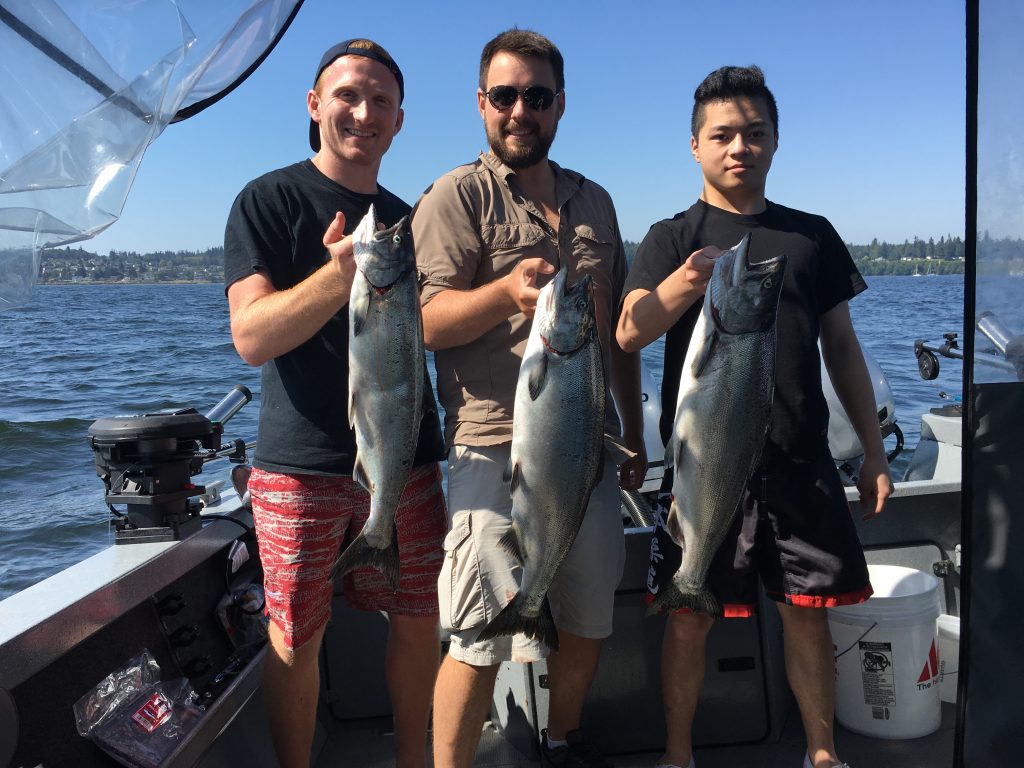
An unusual frosty and snow-bound month of February has many anglers fighting a bout of “Cabin Fever” and since spring is officially a little more than a month away – March 20 to be exact – it’s time to start looking into the crystal ball to see what’s in store for 2019 salmon fisheries.
While the Washington Department of Fish and Wildlife (WDFW) won’t release a complete list of salmon forecasts until a public meeting on Feb. 27, 9 a.m.-3 p.m., at the Lacey Community Center (6729 Pacific Avenue S.E.), we’ve already caught a glimpse of some early returns including a possible rosy Columbia River coho run.
“It is looking pretty good for coho, and let’s just hope that the Queets River (coho forecast) or another coastal run doesn’t prevent us from accessing them,” said Wendy Beeghly, the WDFW coastal salmon manager. “It’s a long process but we’ll see what we can carve out for fishing seasons.”
The Oregon Production Index — the yearly prediction of coho salmon returns to the Columbia River and coast — came out last week and is a robust 1,009,600 compared to a 2018 forecast of 349,000 and an actual return of 230,700.
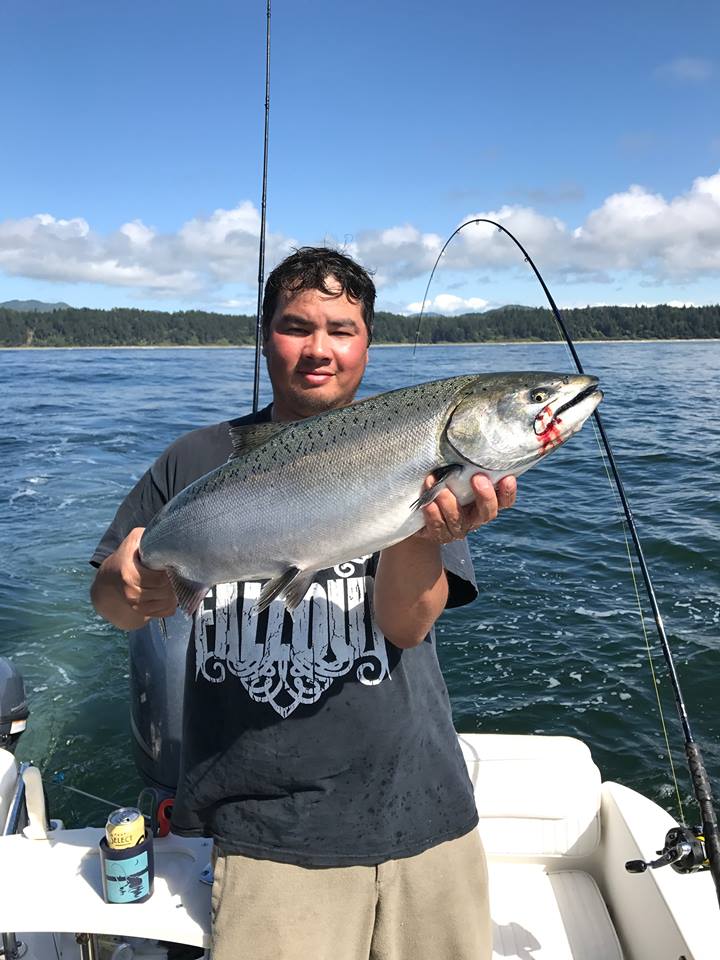
The 2019 prediction is made up largely of a strong 933,500 hatchery coho forecast. Of that 905,600 – 545,000 early-timed and 360,600 late-timed – are predicted to enter the Columbia River.
If the 2019 forecast comes to fruition it will likely provide ample glory moments for anglers in summer and early fall off Washington coast (Neah Bay south to Ilwaco) and in the Lower Columbia River. The hang-up will be how other salmon runs fare and usually there’s one each year that struggles. We’ve got our fingers crossed.
The Columbia River 2019 fall chinook forecast of 340,400 is better than the 2018 actual return of 290,900 but down from preseason forecast of 365,600.
“We had a preliminary look at the Columbia River fall chinook forecast and I’m somewhat concerned,” Beeghly said. “It may be similar or not quite as big as last year.”
Preliminary returns of all Columbia River adult fall chinook for 2018 were off on most forecasted returns except lower river wild and bright fall chinook that were improved.
The 2019 upriver bright chinook outlook of 158,400 is up from 2018 actual return of 149,000 and down from the forecast of 200,100. Tule chinook (a driver for ocean salmon fisheries) is predicted at 54,500 up 2018 actual return of 50,400 and down from forecast of 62,400. Poor ocean conditions the last several years is the likely culprit for this downtrend but could be better after the 2019 cycle.
Many are keeping tabs on the Columbia River spring chinook return, and the first hatchery springer weighing 16 pounds was caught Jan. 28 on the Lower Willamette River – a tributary of the Columbia River – by Dave Frey of Lake Oswego, Oregon.
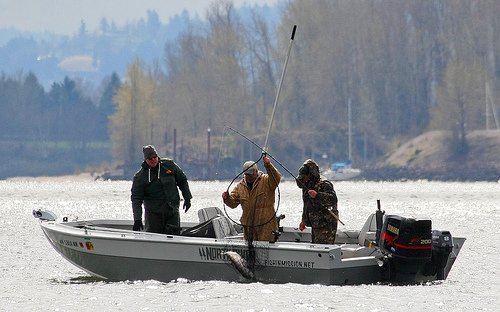
The Lower Columbia mainstem from the mouth to the I-5 Bridge opened on Jan. 1 and draws thousands of anglers seeking out early migrating springers. For the moment the daily limit is two hatchery-marked chinook from Buoy 10 to the I-5 Bridge and will likely drop to one daily once fishing seasons above I-5 are announced.
No spring chinook have been counted at Bonneville Dam to date, but the first spring chinook was tallied at Willamette Falls on Feb. 6.
This year’s spring chinook forecast to the Columbia River is 157,500 down from a forecast in 2018 of 248,520 and an actual return of 176,642.
The largest adult spring chinook return on record was 541,000 (364,600 was the forecast) in 2001, and the worst was 12,792 (12,000) in 1995.
Many are cautious on expectations this season due to residual warm ocean conditions that arrived in 2014 and started to move in a positive direction in 2017 and 2018 when it started to transition into a colder more normal condition. The ocean ecosystem was turned upside down in 2015 and 2016 creating very poor outmigration for young salmon survival.
WDFW and ODFW fishery managers will finalize Columbia River spring chinook fishing seasons above the I-5 Bridge to the Highway 395 Bridge at Pasco at a meeting on Feb. 20.
Last year, 89,882 angler trips were taken with 7,509 adult spring hatchery chinook kept and 1,530 released, plus another 54 jack chinook kept and 96 jack chinook released and 1,476 steelhead kept and 394 released. That averages out to about one hatchery spring chinook kept for every 11.9 trips.
Fishing on Lower Columbia River was open daily from Buoy 10 to I-5 Bridge from Jan. 1-Feb. 28, and from Buoy 10 to below Bonneville Dam from March 1-April 7, April 14 and May 25-June 15 in 2018.
It’s always hard to draw any scenarios right now on when fishing will begin to ramp up. There are many variables that could affect success such as cold-water temperatures, water color and upriver runoff just to name a few. Some years we see early catches while in other years it’s more of a late-timed return that bumps up right near the closure date in April.
The spring chinook fishery creates a fishing frenzy beginning as early as January and February and builds to a crescendo in late March or early April.
The Pacific Fishery Management Council (PFMC) in conjunction with WDFW and tribal co-managers will also announce three ocean salmon fishing options at March 7-12 meetings in Vancouver, WA. The first North of Falcon public meeting to discuss Puget Sound salmon fisheries is 9 a.m. on March 19 at the DSHS Building in Olympia and 9 a.m. on April 3 at the Lynnwood Embassy Suites.
Final salmon fishing seasons will be adopted by the PFMC on April 11-16 at the DoubleTree by Hilton in Sonoma, Calif. For a complete list of meeting dates, go to https://wdfw.wa.gov/fishing/northfalcon/.
More tentative spring coastal razor clam digs announced
Razor clam enthusiasts who’ve been heading out to coastal beaches this winter are digging into some fun times including the most recent digs on Feb. 1-3.
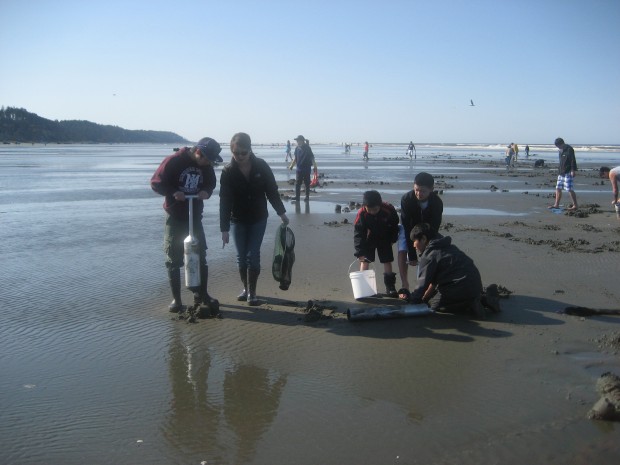
“There weren’t many folks out on Super Bowl Sunday (Feb. 3) so I gave my survey crew the day off and I worked Copalis and digging was good,” said Dan Ayres, the head WDFW coastal shellfish manager. “There was a much larger crowd of diggers (on Feb. 2) who were trying to fit in a dig before the big game.”
Here are stats from those coastal razor clam digs – Twin Harbors: Feb. 1, 1,060 diggers with 11,808 clams for 11.1 per digger average; Feb. 2, 4,069 with 49,839 for 12.3; Feb. 3, 393 with 5,038 for 12.8. Copalis: Feb. 1, 1,395 with 17,946 for 12.9; Feb. 3, 745 with 10,497 for 14.1. Mocrocks: Feb. 2, 3,325 with 42,862 for 12.9.
The season totals at Long Beach were 1,777 with 3,999 for 2.3 (1.2 percent of total allowable harvest); Twin Harbors, 44,319 with 482,555 for 10.9 (45.0); Copalis, 27,055 with 359,180 for 13.3 (41.7); and Mocrocks, 29,508 with 395,756 for 13.4 (26.2). Coastwide total is 102,659 diggers with 1,241,490 clams.
The most current approved digs opened Friday (Feb. 15) and will run through Feb. 21. Low tides –Monday, -1.4 at 5:46 p.m. at Twin Harbors, Mocrocks and Kalaloch; Feb. 19, -1.5 at 6:31 p.m. at Twin Harbors; Feb. 20, -1.3 at 7:14 p.m. at Twin Harbors; and Feb. 21, -0.8 at 7:56 p.m. at Twin Harbors.
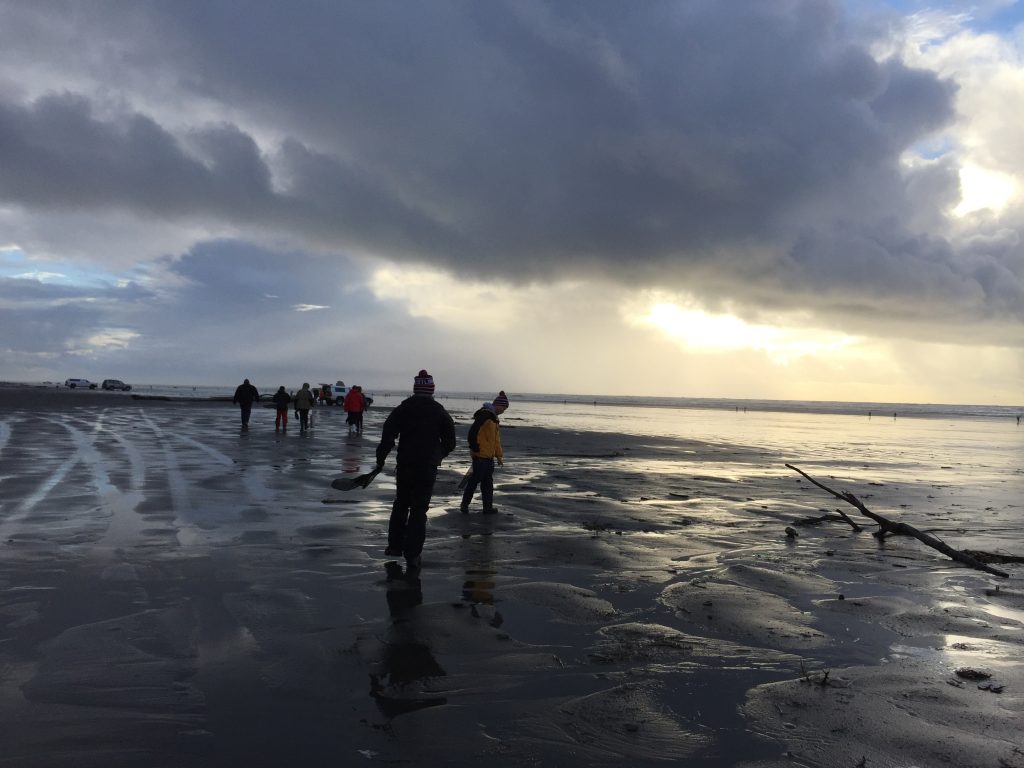
“This is the first real shot to dig clams at Kalaloch and the clams won’t the biggest on earth and we’ll have to see how the digging goes as Kalaloch has thrown us a whammy in the past,” Ayres said. “We have a bunch of digging dates planned in March and April.”
Here are the tentative spring coastal razor clam digs during evening low tides – March 16: Twin Harbors and Copalis; March 17: Twin Harbors and Mocrocks; March 21: Mocrocks.
Then it will switch to morning low tides – March 22 and 24: Twin Harbors, Mocrocks and Kalaloch; March 23: Twin Harbors, Copalis and Kalaloch; April 6: Twin Harbors and Copalis; April 7 and 22: Twin Harbors and Mocrocks; April 8: Mocrocks; April 20: Long Beach, Twin Harbors and Copalis; April 21: Long Beach, Twin Harbors and Mocrocks. Final approval will be announced by WDFW usually a week prior to each series of digs.
The latest marine toxin samples showed a little bit of an increase, and Ayres noted they haven’t seen much in the water.
Oregon Department of Fish and Wildlife saw a spike in marine toxin levels with a spike of 14 parts per million (20 ppm is the cutoff threshold for beach closures). They plan to open beaches next month, but have been faced with low abundance similar to the issues at Long Beach.
Winter chinook fisheries still an option
The winter chinook fisheries continue to produce some fairly good action in open areas of Puget Sound and Strait of Juan de Fuca.
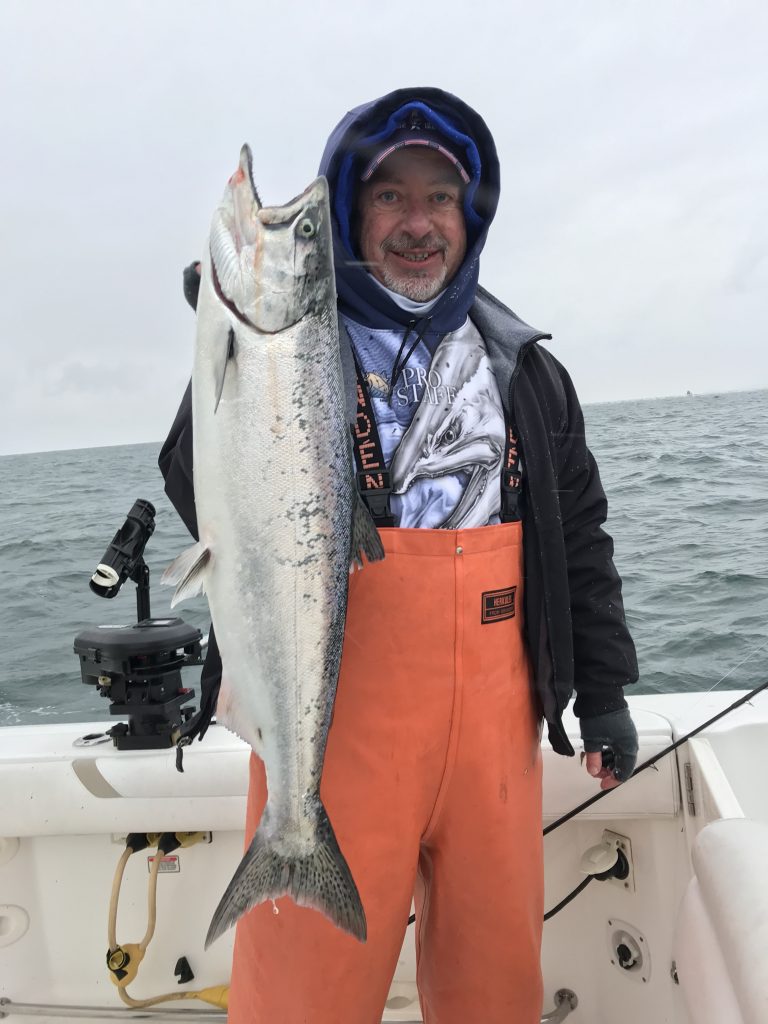
In the Strait some of the most productive fishing for hatchery winter chinook can be found at Sekiu, which just opened on Feb. 16; and Freshwater Bay and areas from Port Angeles east to Port Townsend.
Another area where chinook fishing remains a fair bet is San Juan Islands at
McArthur Bank, Coyote Bank, Clark and Barnes Islands; Sucia Island; Parker Reef; Spring Pass; northside of Decatur Island; Thatcher Pass; Peavine Pass; Point Thompson; Obstruction Pass; Waldron Island; Lopez Pass; and Presidents Channel.
In northern Puget Sound target fish at at Midchannel Bank off Port Townsend; Point Wilson; Double Bluff off Whidbey Island; Pilot Point; Point No Point; Possession Bar; Mats Mats Bay; Marrowstone Island; and Foulweather Bluff.
Other marine areas open for winter chinook are south-central Puget Sound, whichs should ramp up in the Tacoma area; Hood Canal; and southern Puget Sound.
The length of fishing seasons in some marine areas are dictated by catch guidelines or encounter limits for sub-legal and legal-size chinook (the minimum size limit is 22 inches).
In eastern Strait of Juan de Fuca (Marine Catch Area 6) the winter fishery can’t exceed 5,473 total chinook encounters, and through Feb. 3 they were at 6 percent or 302 encounters. In the San Juan Islands (Area 7) it is 10,735, and through Feb. 3 they were at 49 percent or 5,264 encounters.
On the east side of Whidbey Island (Areas 8-1 and 8-2) it is 5,474 encounters, and through Jan. 27 they were at 45 percent of 2,463 encounters. In northern Puget Sound (9) it is 8,336 encounters, and through Jan. 27 they were at 37 percent of 3,051 encounters. Areas 7, 8-1, 8-2 and 9 all have a one hatchery chinook daily limit. Area 6 has a two-hatchery chinook daily limit. WDFW provides catch updates at https://wdfw.wa.gov/fishing/reports_plants.html.
If bottom-fishing gets you excited then mark March 9 on your calendar because that’s when Ilwaco, Westport and La Push opens for lingcod.

